December 1, 2025 | 09:09 GMT +7
December 1, 2025 | 09:09 GMT +7
Hotline: 0913.378.918
December 1, 2025 | 09:09 GMT +7
Hotline: 0913.378.918
Tay Ninh province has favorable soil conditions, climate, and abundant irrigation water, so it is perfect for growing cassava. The current cassava growing area of this province exceeds 62,000 ha, making it the second largest in Vietnam after Gia Lai, but its productivity is the highest.
However, the constant increase in area and high intensity of cultivation have created favorable environments for many pests and diseases to develop, affecting the productivity and quality of cassava tubers.
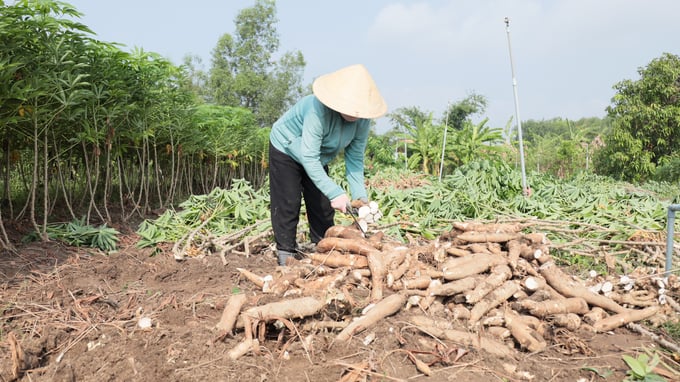
Cassava is a staple crop of Tay Ninh province. Photo: Tran Trung.
According to a preliminary survey by Hung Loc Agricultural Research Center (HARC), in the 2023 - 2024 winter-spring crop, more than 300 ha of cassava were affected by root rot disease. The affected area spread across major cassava growing districts such as Tan Chau, Tan Bien and Duong Minh Chau.
Cassava root rot can affect crops at any stage, especially in fields that are flooded or soils with low nutrients. Research shows that cassava root rot can cause 80 - 100% yield loss.
Farmers face the risk of losing their entire crop when the disease appears in their cassava fields. Factories also require screening and absolute removal of cassava tubers that show signs of rotting, even at a mild level, to avoid affecting the quality of the processed product.
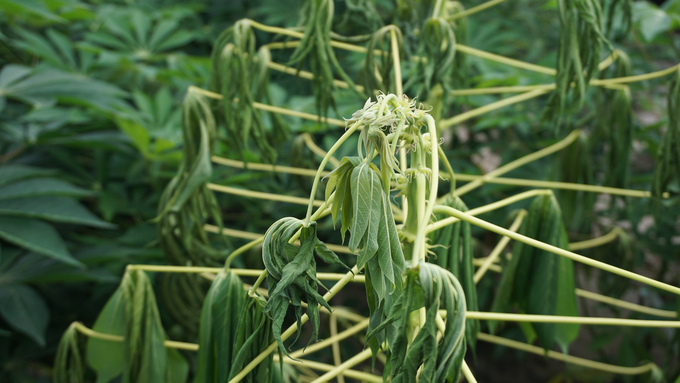
Visible symptoms of cassava infected with root rot disease. Photo: MSc. Pham Thi Nhan.
MSc. Pham Thi Nhan, Deputy Director of Hung Loc Agricultural Research Center, added that cassava is mostly grown intensively in Tay Ninh, and there are always hosts for fungi to attack in the fields. Farmers often provide additional irrigation water for cassava plants, which is understandable in order to ensure that crops have enough water for growth and development. However, excessive irrigation causes soil moisture to increase, creating conditions for fungal spores to become active.
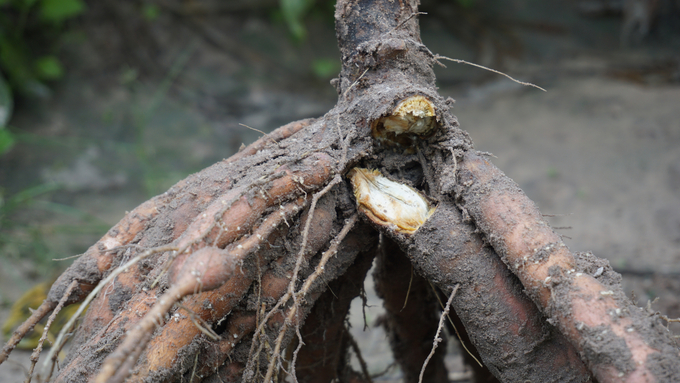
Cassava root rot can cause 80 - 100% yield loss. Photo: MSc. Pham Thi Nhan.
“To prevent diseases, improving soil health is an important foundation for sustainable cassava cultivation. Measures using organic fertilizers, microorganisms, water management and soil protection combined with crop rotation and intercropping will help improve cassava soil, maintain fertility and increase productivity in the long term.
“The combination of science, technology and good agricultural practices will help cassava plants to be healthy, and resistant to diseases. Farmers can cultivate cassava sustainably, protect land resources and increase economic efficiency,” said MSc. Pham Thi Nhan.
According to Tay Ninh Department of Agriculture and Rural Development, Tay Ninh discovered cassava root rot in 2014, a new disease on cassava plants in the locality. From 2015 to now, the disease, with constant appearance, has caused damage in many key cassava growing areas and has tended to increase in both affected areas and the level of damage.
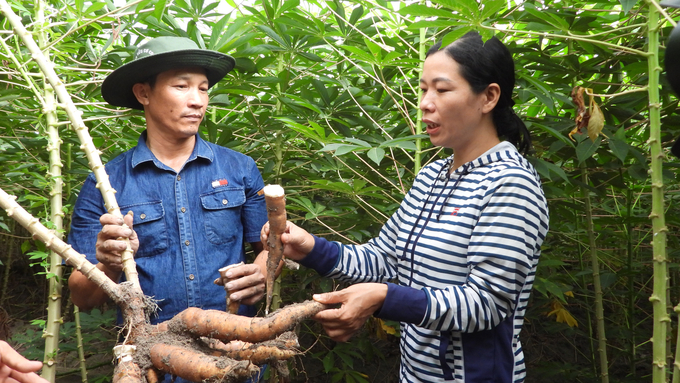
MSc. Pham Thi Nhan shares about cassava variety HLH20-0047. Photo: Tran Trung.
Since 2018, Tay Ninh Department of Agriculture and Rural Development has coordinated with the Institute of Agricultural Genetics, the International Center for Tropical Agriculture (CIAT), and HARC to test cassava varieties that are resistant to mosaic disease. The unit also seeks coordination with the Plant Protection Research Institute to develop a process for integrated prevention of mosaic disease on cassava. The ultimate goal is to help farmers manage the disease and develop cassava sustainably.
As a result, many cassava varieties resistant to cassava mosaic disease have been recognized, such as HN1, HN3, HN5, HN36, HN80, and HN97. Although these varieties have shown positive signs when put into use, research units are still continuing to survey and create new varieties that not only have genes resistant to cassava mosaic disease but also have high yield and tuber quality.
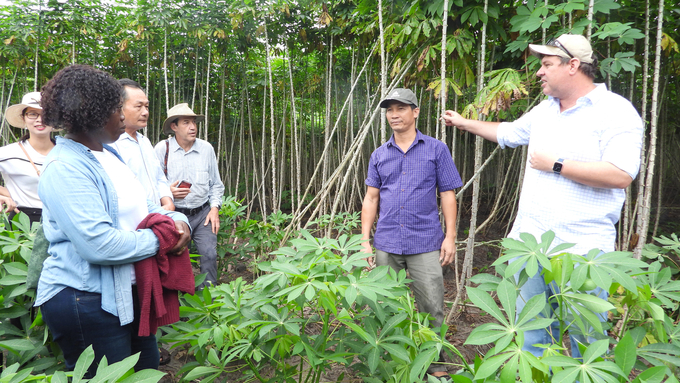
Tay Ninh has been promoting international cooperation to develop cassava sustainably. Photo: Tran Trung.
Recently, Hung Loc Agricultural Research and Experimental Center has initially selected the cassava variety HLH20-0047. Through testing, HLH20-0047 can achieve a yield of 35 - 55 tons/ha; starch content can reach 28.4 - 30%. Not only is it 100% resistant to mosaic disease, this cassava variety is also resistant to witches' broom disease and root rot disease, eligible for cassava cultivation in humid conditions.
"The increasingly complex developments of climate change have significantly affected the degeneration of plant varieties in general and cassava varieties in particular. In hope of acquiring a new superior cassava variety, research and testing must go through many steps and take a lot of time. On average it takes at least 3 - 5 years to officially select a recognized variety," said MSc. Pham Thi Nhan.
Translated by Samuel Pham

(VAN) An increasing number of livestock farms are using biogas generators to create a source of renewable electricity, helping to save costs and mitigate environmental pollution.

(VAN) Small changes in rice cultivation, from irrigation methods and straw collection to input management, are paving a new way for Vietnam's agriculture in the journey toward emission reduction.

(VAN) With the project of converting biogas into renewable electricity, Australia is both helping pig farms reduce their energy costs by up to 25% and contributing to environmental protection.
![Hue aims for Net Zero: [1] Initial steps from green transportation](https://t.ex-cdn.com/nongnghiepmoitruong.vn/608w/files/huytd/2025/11/28/0853-anh-6-giao-thong-xanh-hue-094717_940-153724.jpg)
(VAN) For sustainable development, Hue City is implementing many solutions to promote green transportation, which is an important initial step on the journey to building a Net Zero Hue.

(VAN) Nghe An Province, one of the localities with the largest forest area in Vietnam, is set to gain significant benefits from the implementation of forest carbon credit payments.

(VAN) Circular agriculture helps Mekong Delta farmers cut greenhouse gas emissions while boosting incomes through efficient reuse of agricultural by-products.

(VAN) According to Mr. Vo Minh Thanh, Director of the Tay Ninh Department of Agriculture and Environment, Resolution 57 has created a new development pathway for the locality, shifting from traditional toward modern agriculture.